
Last summer my book club thoroughly enjoyed reading and discussing Sue Monk Kidd’s 2014 historical novel Invention of Wings. Ever since then, a trip to Charleston was high on my travel wish list. I wanted to walk in the footsteps of Sarah and Angelina Grimké, as well as their house slaves Hettie and Charlotte.
I’ve recently returned from a long weekend in Charleston and that’s exactly what I did, thanks to Carol Ezell Gilson and Le Ann Bain’s “The Original Grimké Sisters Tour,” which I highly recommend.
Follow along on my photo tour until you can get the chance to go to Charleston yourself.

The Grimké Family Home at 321 East Bay Street in Charleston (1803-1819). The Grimkés moved here when Sarah was 11 years old. Angelina was born here in 1805. Most of the events from the Invention of Wings takes place here.

The front door of the Grimké family home at 321 East Bay St. The Grimkés had 9 children, including 3 teenagers, at the time they moved to this house on East Bay. They’d run out of room at their prior house on Church Street.

The back of the Grimké house at 321 East Bay St. This is now a parking lot for the law firm that owns the building, but it was once the site of the out buildings, including the outside kitchen and slave quarters.
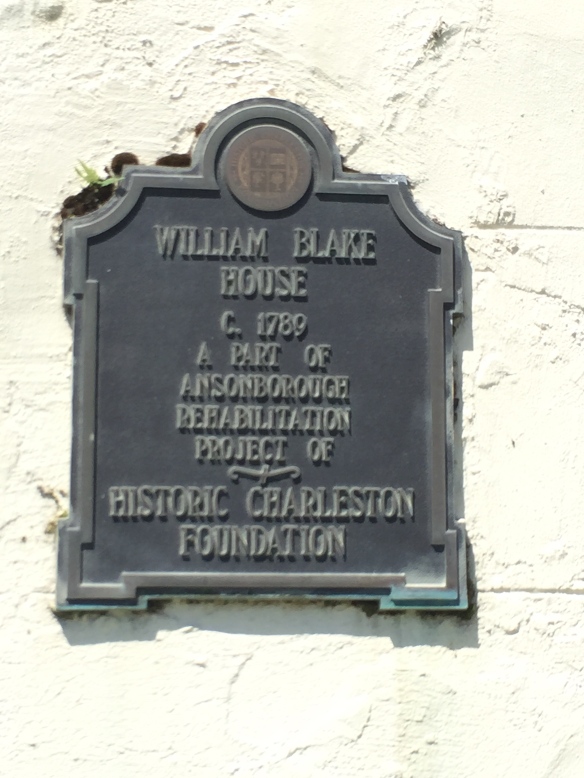
As of April, 2015, this is the only historical marker on the former Grimké home on East Bay. However, there are plans to place a commemorative marker at the site on May 5, 2015 to recognize the home of the Grimké Sisters. I understand that Sue Monk Kidd will be there as a part of her book tour for the paperback launch of Invention of Wings.

The view from the front door of the Grimké home on East Bay. Charleston Harbor can be seen behind the buildings toward the back. Sarah Grimké would have been old enough to notice the slave ships arriving in the harbor before 1808, the year that foreign slave trade was abolished in the United States.
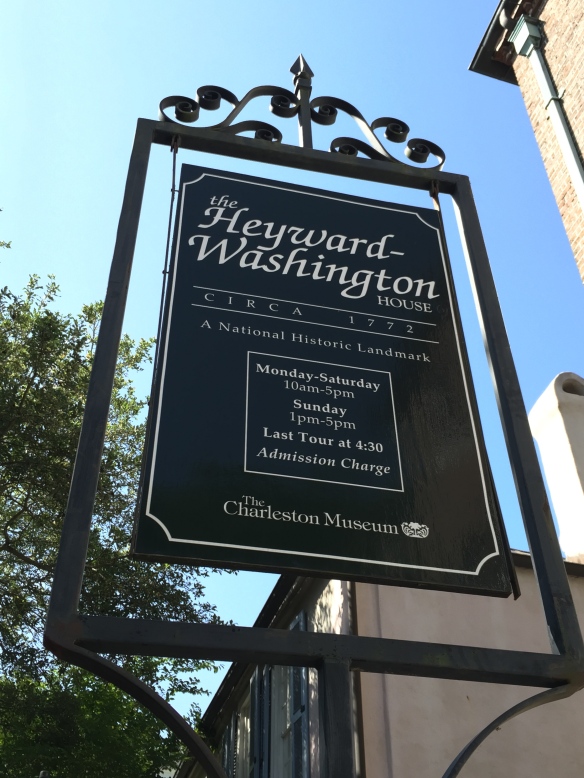
The Grimké family home from 1794-1803 was located at 87 Church Street in Charleston. It is now known as the Heyward-Washington House and is part of The Charleston Museum. The home has been restored and preserved circa 1772, back when the Heyward family lived there. It is also named after George Washington, who visited Charleston and rented this home in 1791.

The Grimké family home on Church Street from 1794-1803 (the Hayward-Washington House). I highly recommend that fans of Invention of Wings take a tour of this house in order to get a real feel for the manner in which the Grimkés and their slaves lived at the time. Tickets and other details are available here.
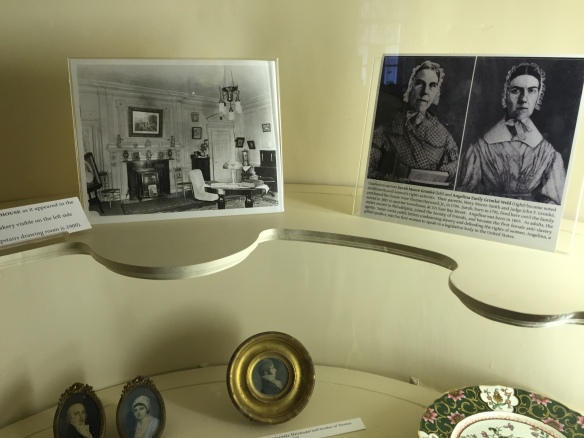
In a hutch on the first floor of the Heyward-Washington House, there are photos of the Grimké Sisters on display. However, most of the tour is about the Heyward family who lived there during the revolution. (And the Heywards are interesting in their own right.)
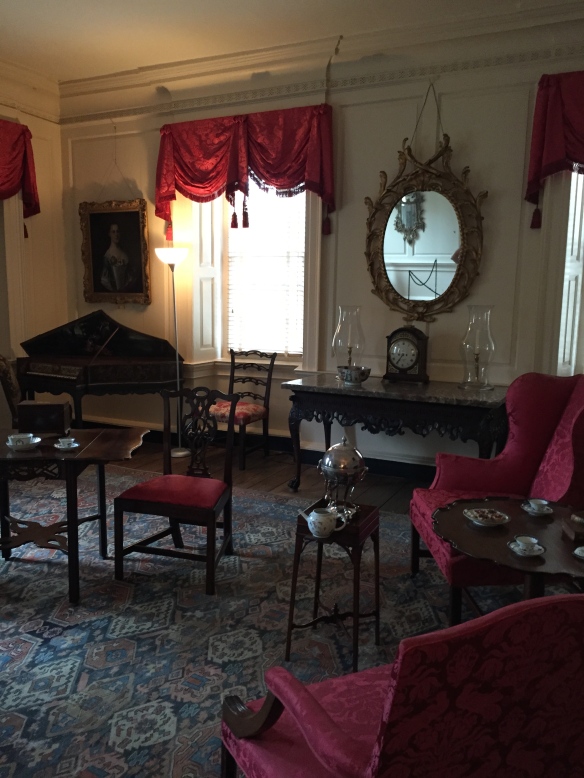
The lovely drawing room of the Heyward-Washington House overlooking Church Street. The furniture pieces are 18th century handmade antiques, many of which are original to the house.

The fireplace in the drawing room of the Heyward-Washington House, next to which is a bell-pull for the attending house slaves.
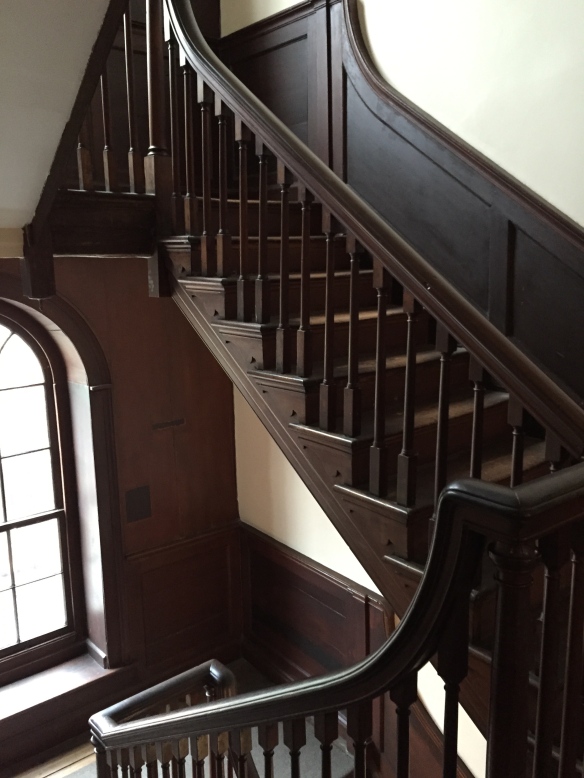
The stairs from the second floor landing. Sarah Grimké would have lived in a room on the third floor along with her other siblings. So, both Sarah Grimké and George Washington have touched this banister. Pretty cool.

One of the out buildings at the Heyward-Washington House. The downstairs included the kitchen and laundry room and the upstairs was slave quarters. This helped me picture what the backyard of the Grimké home was like for Hettie and her mother.

The kitchen of the Heyward-Washington house. This is where Hettie’s Aunt-Sister spent most of her time as the head cook.
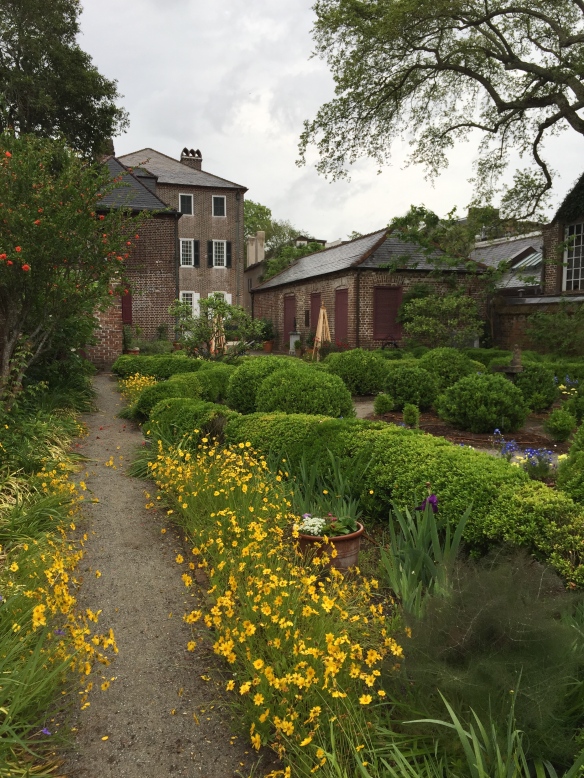
The view of the back of the Heyward-Washington House from the back gardens. These gardens would have been used as kitchen gardens at the time, and were tended by slaves. The building to the right was the carriage house, the stables, the cow house, with additional slave quarters above. According to the timeline in Invention of Wings, this is where the slave Hettie and her mother would have lived together before they all moved to the East Bay house. As Hettie says in Invention of Wings, their room “sat over the carriage house and didn’t have a window. The smell of manure from the stable and the cow house rose up there so ripe it seemed like our bed was stuffed with it instead of straw.”

The back gardens of the Heyward-Washington House. This is where Sarah Grimké, at age 5, would have first observed a slave being beaten. It disturbed her so much that she ran out of the house and down to the wharf, where she reportedly asked ship captains to take her to a place that didn’t have slavery.

St. Philip’s Episcopal Church, Church Street in Charleston. As Sarah says in Invention of Wings: “On Easter, we Grimkés rode to St. Philip’s First Episcopal Church beneath the Pride of India trees that lined both sides of Meeting Street.” This is where Sarah taught the “Colored Sunday School.” The most elite members of Charleston society belonged here and paid for the privilege of renting pews closest to the altar.

A view up Church Street at St. Philip’s. The Grimkés would have walked right down this street when they lived in the Heyward-Washington House.

The Old Jail on the corner of Franklin and Magazine Streets in Charleston. You have to appreciate the foreboding architecture. Right next door the the Old Jail, to the left of this photo, is where the old Work House once stood. Runaway slaves who were captured were brought to The Workhouse, along with disobedient slaves. The slave owners paid the city for their stay and their punishment.

An empty parking lot and a corner building now stand at the site of the infamous Work House on Magazine Street. In the book, little Angelina visits a friend whose family lived a block or so from the Work House: “During Nina’s last visit there, she’d heard screams floating on the breezes and had leapt up in alarm, scattering Jackstones across the piazza.”

There is a sidewalk marker at the corner where the Work House once stood on Magazine Street. In Invention of Wings, Mrs. Grimké sends Hettie to the Work House for punishment after Hettie is caught attending a meeting with slave rebellion leader Denmark Vessey. Hettie’s foot was injured on the Work House treadmill, which Hettie says is like “a spinning drum, twice as tall as a man, with steps on it. Twelve scrambling people were claiming it fast as they could go, making the wheel turn.”

No visit to Charleston’s historic sites would be complete without a solemn tour of the Old Slave Mart Museum at 6 Chalmers Street. Although this slave market did not start up until the 1850s, well after most of the events in the book, the museum there contains a great deal of the slave history of Charleston. Of particular interest to readers of Inventions of Wings is a display which shows an invoice from the Charleston Work House to a slaveowner for services rendered. The invoice shows the dates and the punishments rendered to a slave, including the treadmill and what appears to be “salt” in the wounds.

In 1856, Charleston prohibited the sale of slaves in public. The spectacle of public sales inflamed passions and invited criticism, so it was decided to bring slave markets indoors. At the same time, Thomas Ryan, one of the Charleston aldermen who introduced the ordinance, bought this property and opened the Ryan Slave Mart, from which he would personally profit. The main room was a showroom in which available slaves were on display. In the back, in buildings which have since been torn down, there was a jail and a morgue.

Prior to 1856, slaves were sold on the streets in Charleston in open view. Many were sold on the north side of the Old Exchange Building, which was located right on the wharf. This is also the site where Hettie saw the Charleston postmaster publicly burning Angelina Grimké’s antislavery pamphlet. As Hettie says in the book: “A black billow was rising over the Old Exchange. . . . At the corner of Broad Street, I stopped in my tracks. What I thought was the city burning was a bonfire in front of the Exchange. A mob circled round it and the man from the post office was up on the steps throwing bundles of paper on the flames. Every time a packet landed, the cinders flew and the crowd roared. . . . I was weaving my way, keeping my head down, when I saw one of the papers they were trying to burn laying on the street trampled underfoot, and I went over and picked it up. It was singed along the bottom. An Epistle to the Clergy of the Southern States by Sarah M. Grimké.”
For too long, the Grimké sisters have been lost in the complicated sweep and prejudice of Charleston history, but thanks to Sue Monk Kidd and the efforts of many well informed and inspired local historians, they will soon receive the attention they deserve. I can’t wait to see what their historical marker will look like.
For further reading:

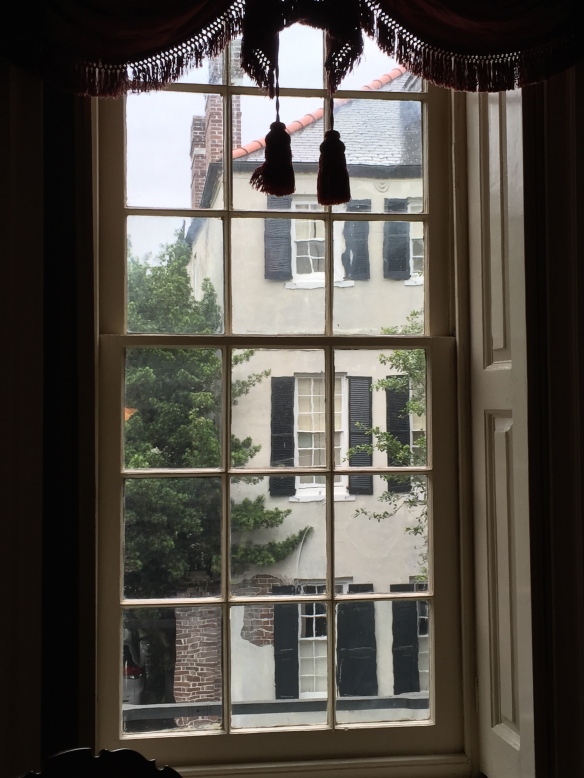

This was a great pictorial with text. Much appreciated for those of us in the Lowcountry!
LikeLike
Good, very insightful
LikeLike
Pingback: The invention of wings, by Sue Monk Kidd – wantoread
Thank you so much for the photographs which add so much to the experience of reading The Invention of Wings.
LikeLike